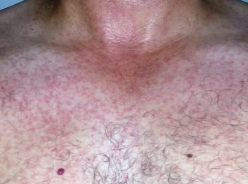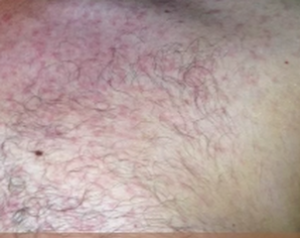What is Zika virus?
It is a viral disease also known as Zika fever primarily caused by the bite of Aedes mosquito. The virus belongs to the genre Flavivirus. As mentioned already, the vector transmitting the virus is Aedes mosquito that bites usually during daytime especially during early or late afternoon hours.
This emergent mosquito-borne virus, Zika virus was first identified in rhesus monkeys in Uganda, 1947 through monitoring and observations of sylvatic yellow fever. Later in 1952, the disease was identified in humans in Uganda and also in United Republic of Tanzania. Zika virus outbreaks have occurred in Asia, Pacific regions, Africa, and America.
Zika virus disease epidemics were first reported from Pacific regions in 2007, then in 2013 from Yap and French Polynesian regions, and from American regions (Brazil and Colombia) as well as Africa (Cabo Verde) in 2015. All in all, transmission of this disease was reported from 64 countries and territories since 1st January 2007.
Signs and Symptoms
Incubation period that is the time period from exposure to the disease till the appearance of noticeable symptoms, of Zika fever is unclear but the probable period is just a few days. The symptoms are much like those caused by other arbovirus infections like dengue, and includes fever, conjunctivitis, skin rashes called Zika rashes, joint and muscle pain, headache, and malaise. The symptoms are generally mild and last for 2-7 days.
Zika Rash – The Appearance
One of the noticeable symptom of Zika is the rash, which begin to appear on the face and then spread to other parts of the body. Zika rash are flat and red, with little bumps at certain places.
The rashes become more prominent during the second and third day and disappear on their own by the fourth day. In a week’s time, the rashes completely disappear.
The disease and its potential complications
French Polynesia and Brazil saw large outbreaks of this disease in the year 2013 and 2015 respectively, during which national health authorities stated potential auto-immune and neurological complications of this particular viral disease. In recent times, local health authorities in Brazil observed a rise in the Guillain-Barre syndrome which overlapped with Zika viral infection amongst the general public and an increase in the babies born having microcephaly in northeastern Brazil. Extensive research has shown connection between infection by Zika and occurrence of neurological disorders and fetal malformations. Nonetheless, more research is required to look into this relationship. Other probable causes are being investigated too.
Mode of Transmission
The virus is spread to human beings from the bite of a mosquito of the genus Aedes (in particular Aedesaegypti in the tropical regions) which is already carrying the Zika virus. This is the same insect that is held culprit for the transmission of dengue, yellow fever and chikungunya. Conversely, sexual transmission of this virus is also possible. Other transmission modes that are currently being examined include perinatal transmission and blood transfusion.
Diagnosis
Infection with the Zika virus disease can be assumed on the basis of symptoms and recent travel history records, that is to say, staying or travelling to and from a country or area affected by Zika fever. The occurrence of Zika virus disease can only be confirmed through laboratory testing and examinations for the manifestation by Zika virus. To do this, blood or any other body fluid like saliva or urine is tested for the presence of RNA of Zika virus.
Zika Prevention- Through vector control
Breeding sites of mosquitoes are potentially dangerous places and pose significant threats for infection by Zika virus. So preventing and/or controlling these sites for reducing mosquitoes is the first and foremost method of stopping this disease. This can be achieved through source reduction which includes modification or removal of breeding sites and also reducing the contact between people and mosquitoes. This is done by regular usage of mosquito repellants, wearing preferably light-coloured attires that also cover maximum part of the body, installing physical barriers like window screens in houses and keeping doors and windows closed during peak times for mosquito bites, sleeping underneath mosquito nets during daytime.
One of the most important prevention methods is to clean, cover and occasionally empty containers that regularly stores water like drums, buckets, pots, etc. Places that may be potential mosquito breeding sites like flower pots, roof gutters, drains, and used tyres must be cleaned or sprayed regularly. Local Communities should come forth and support local governments in their efforts to reduce and eradicate mosquitoes from their locality. The period after rainy season is a crucial period and efforts must be put to remove mosquito breeding sites like still waters accumulating in discarded containers, drains, and waste materials immediately after heavy downpours.
Insect repellants must contain DEET (NN, N-diethyl-3-methylbenzamide), icaridin (1-piperidinecarboxylic acid, 2-(2-hydroxyethyl)-1-methylpropylester) or IR3535 (3-[N-acetyl-N-butyl]-aminopropionic acid ethyl ester). Instructions on product labels must be strictly followed. During outbreaks, spraying of insecticides as per the instructions of health advisors may be carried out. Insecticides suggested by WHO Pesticide Evaluation Scheme may be used like larvicides for treating comparatively large water containers. Special attention and aid must be given to individuals who might not be capable of sufficiently protecting themselves like young children, sick and elderly people.
Travellers must abide by basic norms and precautions explained above to safeguard themselves from the deadly mosquito bites.
Treatment
Generally Zika virus disease is mild and needs no specific treatments. People infected by the virus must get ample rest, consume sufficient fluids, and treat fever and pain with common medicines. However, if their conditions deteriorate, they must seek immediate medical help. Currently no vaccine exists for this particular viral disease.
Zika Rash – Pictures

